Threshing machines separate grain crops from their chaff or straw. These machines work by cutting and collecting crops, then threshing them by beating the grains off the stalks. The separated grains are sorted out and cleaned using screens whilst the chaff and straws are removed.
Many of these threshing machines are available in the market from different manufacturers. The machines have different capabilities and they also have different features which makes it hard to find the perfect machines to purchase.
This article will highlight the market overview, threshing machine types, and the factors to be considered when purchasing these machines.
Table of Contents
Overview of the global threshing machine market
Types of threshing machines
How to select ideal threshing machines
Summary
Overview of the global threshing machine market
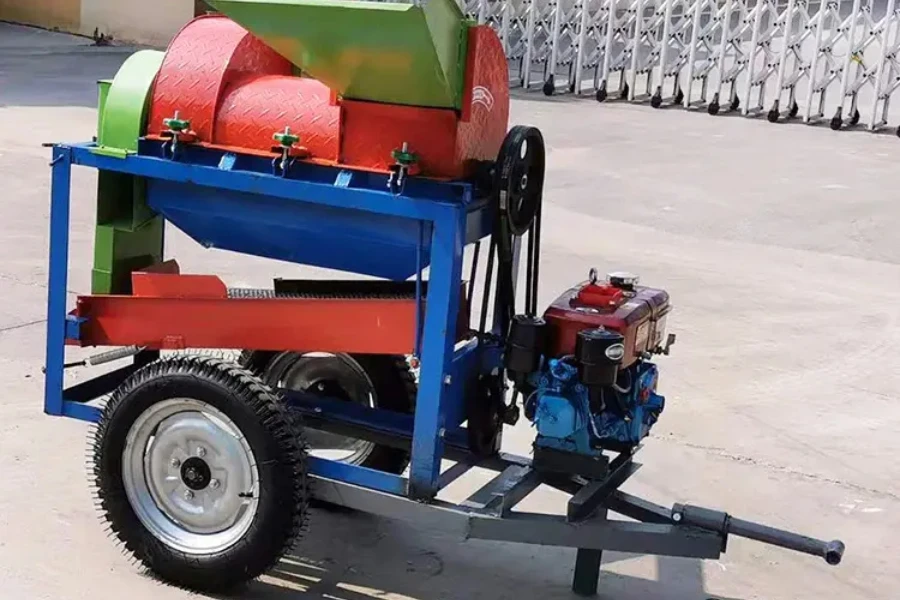
According to Data Intelo, the threshing machinery market is anticipated to grow at a compound annual growth rate (CAGR) of 5.5% from 2022 to 2030. The growth is caused by increased demand for food grains consumed by the growing population. There is global awareness concerning the benefits of involving threshing machines in agriculture.
In addition, technological advancements and rising disposable income in developing countries will contribute to the growth.
The corn-threshing segment will grow at a CAGR of 6% during the forecast period. The Asia-Pacific region dominated the threshing market with a share of over 40% in 2019. This area is expected to dominate during the forecast period with increasing demand for agricultural machinery.
China and India will lead the regional market due to the growing population and favorable government initiatives and subsidies when acquiring threshing equipment.
Types of threshing machines
1. Flail threshing machines
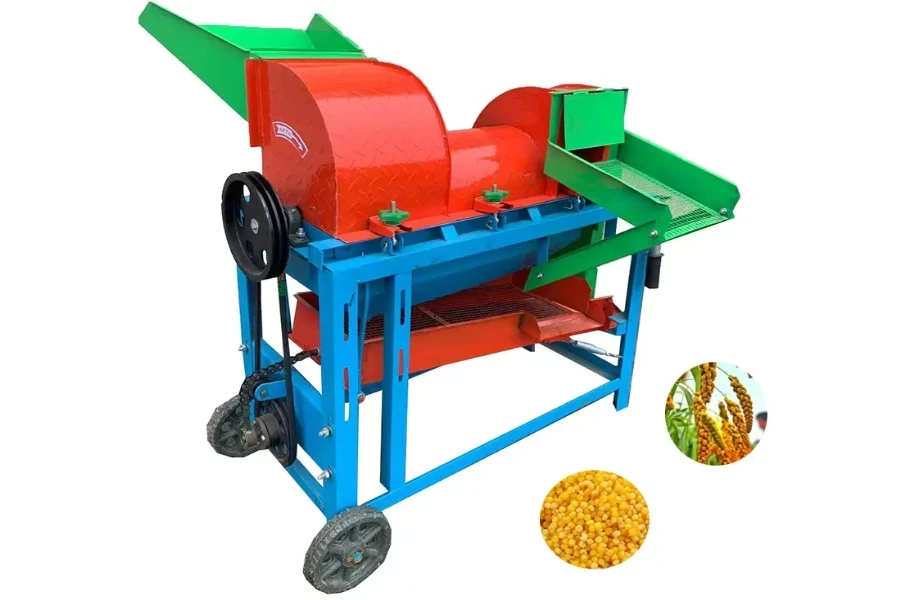
Flail threshing machines use rotating cylinders or drums equipped with flails to sunder grains from straws. Powered by a chain drive or belt, the drum rotates while the flails beat against the crops to break the grains off the straw.
The split-up grains are collected and moved to a sorting and cleaning system, while the chaff and straw are ejected from the machine. They are used for small scale farm activities to process small quantities of grains like oats, wheat, rice, and barley.
2. Straw walker threshing machines
Straw walker threshers use a series of straw walkers or shakers to split up grains from the straw. Grains and straws are fed into the machine and first threshed by beaters of drums to separate the grains from the straw.
The chaff and straw are moved to the top of the machine to be dropped onto a series of straw walkers. At this point, the oscillating sieves or screens gently shake the chaff and straw to let the heavier grains fall through and be gathered. Although they are more complex and larger than flail threshers, they are also applied in small-scale farming on crops like rye, oats, wheat, and oats.
3. Rotary threshing machine
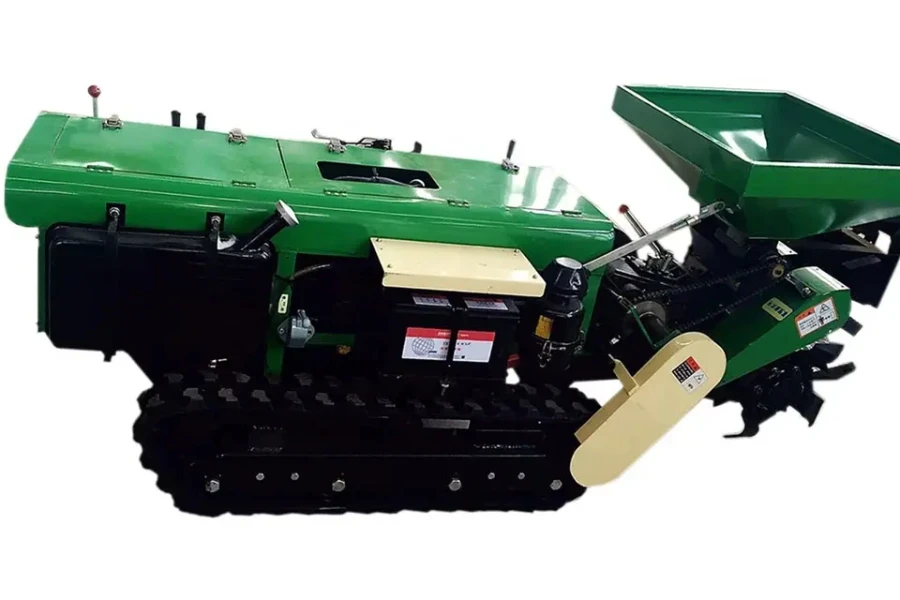
Rotary threshing machines have a rotor or rotating cylinder to divide the grains from the straws. As the crops are fed into the equipment, they are first threshed by a beater or drum to separate the grains from the straws. Afterward, the grain and straw are pushed onto the rotor with teeth or rows of spikes that rotate at high speed to sunder the grain from the straw further.
The separated grain is gathered and moved to the cleaning and sorting system as the straw and chaff are ejected from the machine. These machines are used in modern agriculture to handle a wide variety of crops like corn, wheat, and oats. They are a part of combine harvesters to harvest and thresh in a single operation.
4. Spike-tooth cylinder threshing machine
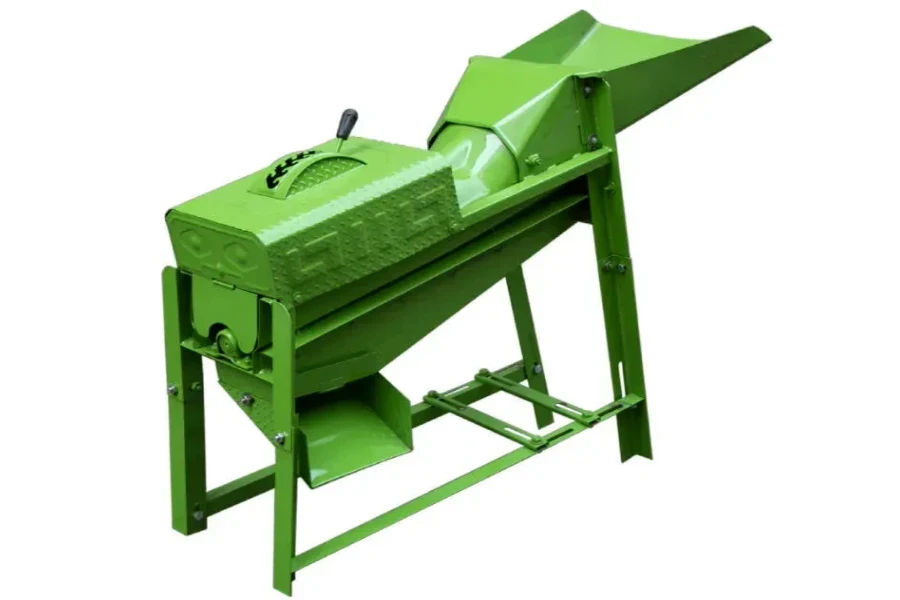
Spike-tooth cylinder threshers use rotating cylinders with teeth or spikes to split grain from the straw. Crops are fed into the machine and the shed by a beater or drum to separate the grain from the straw. These grain and straw are fed onto the rotating spike-tooth cylinder to separate the grain from the straw further.
While the separated grain is collected, cleaned, and sorted, the straw and chaff are removed from the machine. They are generally slow and less efficient and thus are used in small scale farming operations for grains like barley, oats, and corn.
5. Wire-loop threshing machine
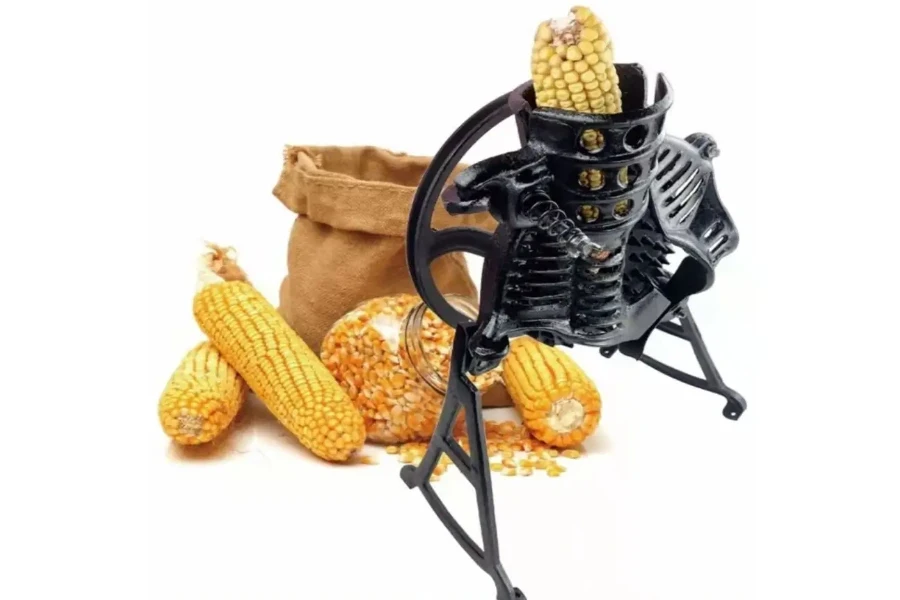
Wire-loop threshing machines use rotating cylinders with wire loops that separate grain from straw. The crop is fed into the machinery and threshed by a beater or drum to sunder the grain from the straw. This grain is fed onto the wire-loop cylinder with rows of rotating wire loops that further split the grain from the straw.
The grain is gathered, cleaned, and sorted as the chaff and straw are removed from the machine. These machines handle various crops like barley, oats, and corn. They are fast and efficient machines used in small-scale and commercial farming operations.
How to select ideal threshing machines
1. Crop type
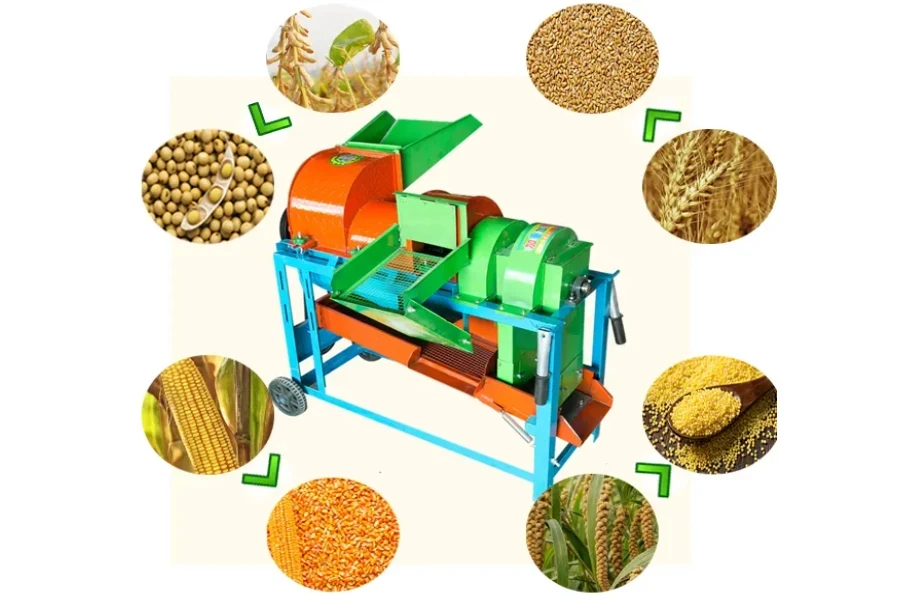
The types of crops being harvested and threshed determine the machine type used. Various crops have different features, like grain size, which affect the threshing machines’ design and functionality. For instance, combine harvesters, reaps, threshes, and winnows as a single machine. They process small grains like barley, wheat, and oats.
Corn threshing machines are only designed to separate the kernels from the cobs. Rice threshers split grains of rice from stalks. Also, flax threshers break the polls open to sunder the seeds from the stalk. Buyers should know that using the wrong type of threshing machines can damage grains.
2. Capacity
The capacity of threshing equipment determines the amount of grain to be processed in a given time. Approximately hand threshers can process around 100–300 pounds of grain per hour. Stationary threshers process around 500–5,000 pounds of grain per hour.
Additionally, combine harvesters can thresh around 3,000–20,000 pounds of grain per hour. The capacity varies depending on crop type, moisture content, and operators’ expertise. Buyers should capture all these specifications when selecting the threshing machine to ensure it is appropriate to the agricultural application.
3. Power source
Selection of threshing machines depends on the power source available in the threshing area. Manually operated threshers are powered by foot or hand and are suited for small-scale farming activities. Electrical threshing equipment uses electricity, making them more efficient as they are faster and have a higher capacity. There are tractor-powered threshers suitable for large scale farming operations.
In addition, engine-powered threshers have internal combustion engines suited for areas without tractors or electricity. They are generally powerful, even though they need fuel and regular maintenance. Buyers should consider availability and reliability of power sources when acquiring threshers.
4. Cost
Considering cost, threshers can be selected depending on factors like the crop being threshed, agricultural operations scale, and budget set by the buyers for the investment. Cost can also vary based on the equipment type and capacity. On average, small scale threshing involves manual threshing machines costing around US $50–300.
For medium threshing machines, the tractor-mounted theshers cost between US $2,000 and 5,000. Moreover, large scale farming activities may require more expensive machines like the combine harvesters, whose cost ranges between US $100,000 and 500,000. Buyers should also consider repair and maintenance costs when acquiring threshers.
5. Threshing mechanism
The crop type and scale of farming activities determine the threshing mechanism used. Drum threshers use rotating drums attached with spikes or bars that separate grain from the straw. They are suitable for crops like wheat, rice, and barley on large scale operations. Spike-tooth cylinder threshing equipment uses cylinders with teeth or spikes that sunder grains like oats and wheat from the straw.
Axial flow threshers use rotors and concave systems to process crops like maize. Buyers should consider the specific needs of the crops they intend to thresh to select the appropriate threshing machine.
6. Grain handling
Buyers should also consider how the grain will be handled after threshing when acquiring threshers. Combine harvesters can reap , thresh, and split grain from straw in a single operation. As such, they are suited for large scale threshing activities for grains like corn and soybeans.
Strippre harvesters have beaters that remove seeds from their heads and plant leaves. They are generally used on crops such as cotton and sunflowers. Some machines thresh crops and clean them of debris. Generally, the needs of particular threshing operations, like post-threshing grain handling requirements, determine the machine type used.
Summary
Carefully considering the above factors will aid the buyers when choosing the ideal machine for crop threshing. They have various options of threshers depending on the ultimate goals and needs of the farm threshing operations.
After careful evaluation and appropriate budget, buyers can acquire high-quality threshing machines on Chovm.com.





 বাংলা
বাংলা Nederlands
Nederlands English
English Français
Français Deutsch
Deutsch हिन्दी
हिन्दी Bahasa Indonesia
Bahasa Indonesia Italiano
Italiano 日本語
日本語 한국어
한국어 Bahasa Melayu
Bahasa Melayu മലയാളം
മലയാളം پښتو
پښتو فارسی
فارسی Polski
Polski Português
Português Русский
Русский Español
Español Kiswahili
Kiswahili ไทย
ไทย Türkçe
Türkçe اردو
اردو Tiếng Việt
Tiếng Việt isiXhosa
isiXhosa Zulu
Zulu